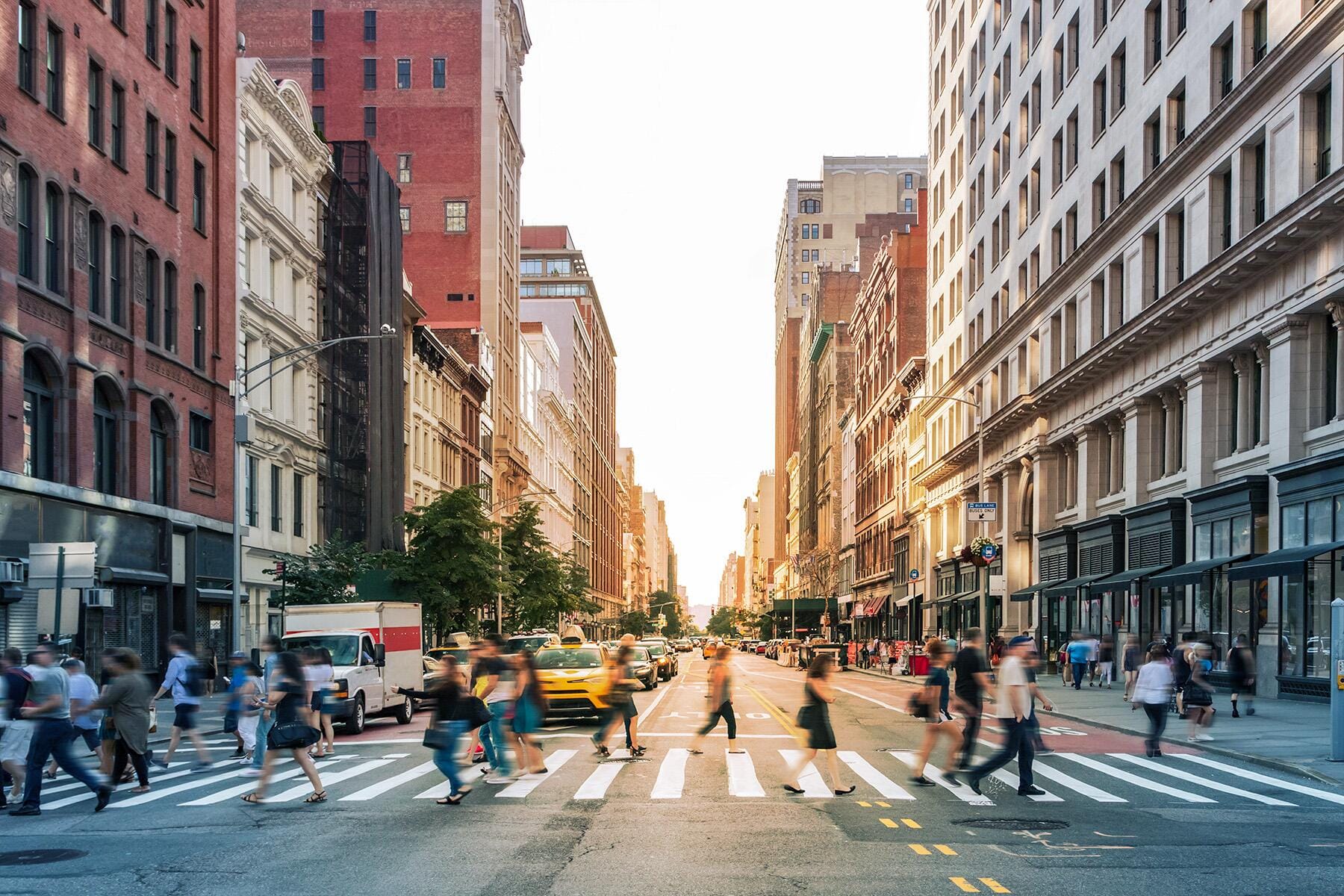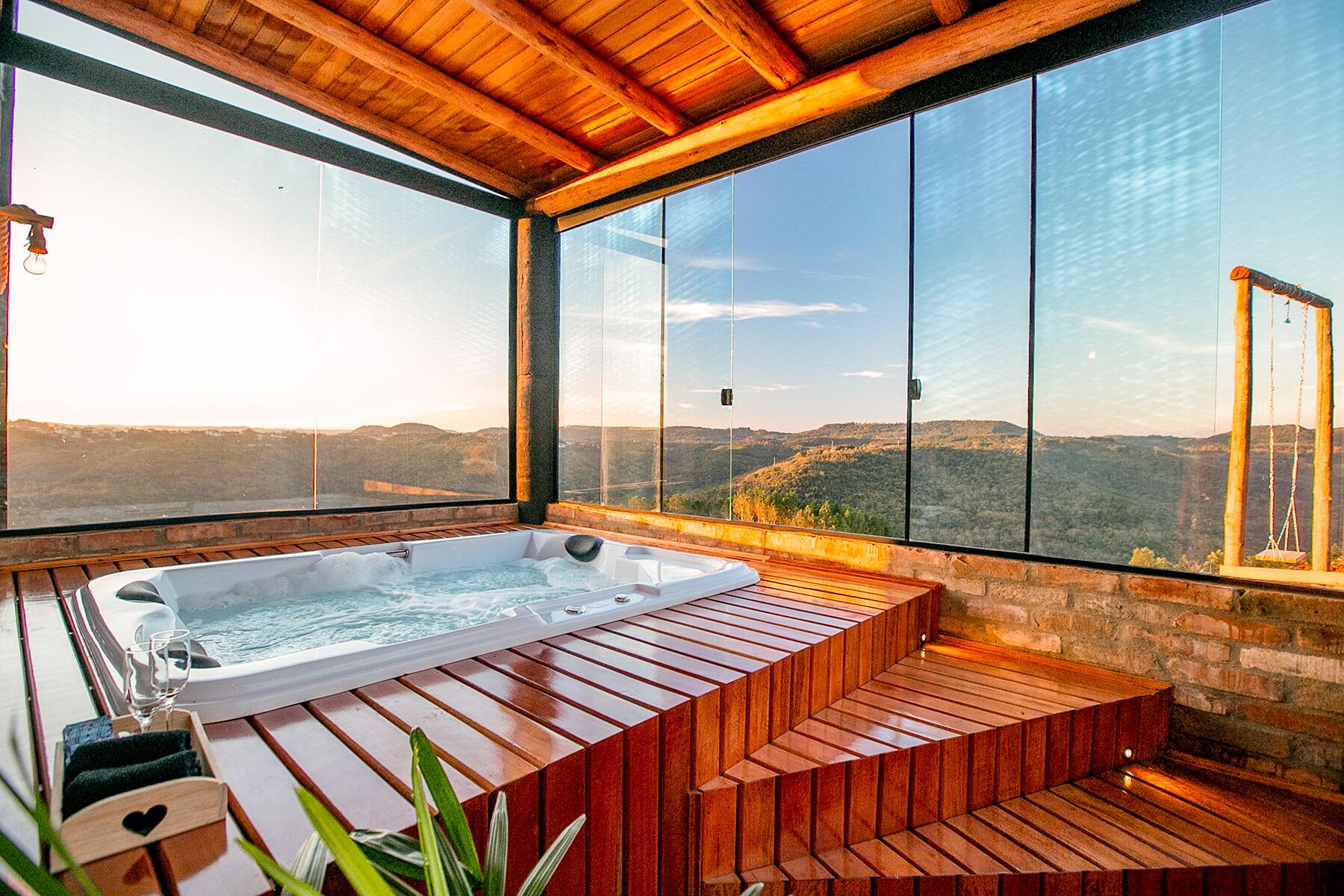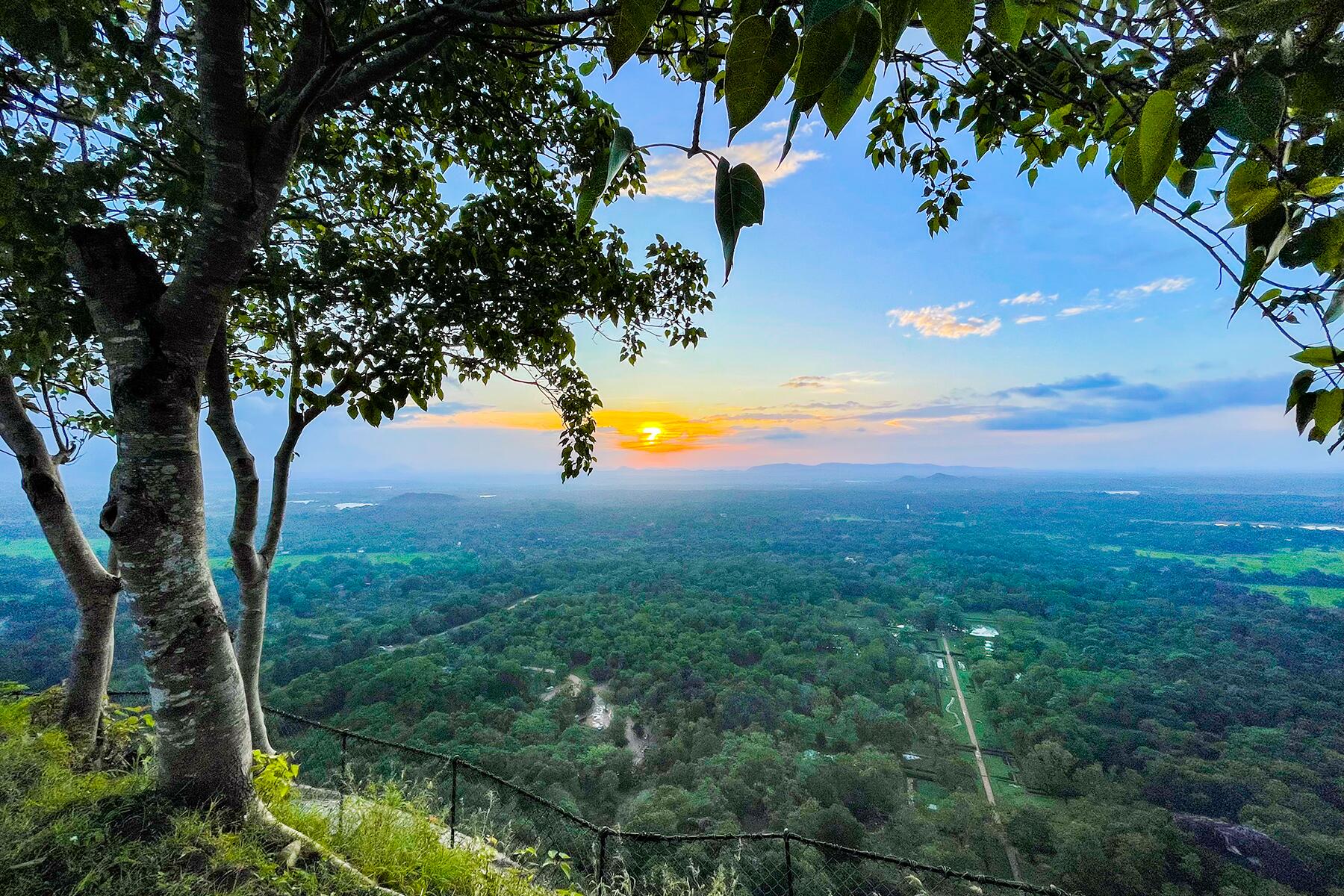Sri Lanka's new trail weaves through breathtaking vistas and a storied past.
Poets were peripatetic. They measured the mountains by footsteps. They noticed the pirouette of leaves and the swish of the winds, the cragginess of the paths, and the abundance of nature. Our language is better for their romanticism.
But I made no passionate observations in Sri Lanka. Turns out, the prose is easier when your backside is resting on a comfortable surface, preferably horizontal.
I was in the country that straddles the Indian Ocean, desperately clinging to hope that the road would end with the next step. One, two, three…ten. Breathe in, breathe out.
The UNESCO World Heritage Site of Sigiriya is a genius of architecture and city planning dating back to the 5th century. The ancient city extends 180 meters high and takes 1,200 steps to climb. On the way up, a detour on a metal staircase leads you past cave paintings. If the climb is difficult before this point, it’s downright terrifying when you’re clambering up this sidebar of an attraction. I was pulling myself by the railings at the same time a class of schoolchildren was sprinting up, sending a zing of fear into my heart with each stomp on the metal steps.
It took two hours to scale this giant, but the reward was the spectacular views of the surrounding jungles from the terraces of the Sigiriya Rock Fortress. After a sprinkle of unseasonal rain, the clouds were giving way to clear blue skies. I was lucky to watch the yellow sun fade into pale orange before sinking into the sky, a fading halo disappearing into the lush greenery. This is a sunset enjoyed by few, as only recently have authorities allowed visitors to stay for the sunset.
Recommended Fodor’s Video
But you know what they say about stairs? The ones that go up must also come down. What a painting it would have made: two silhouettes descending at twilight, a shaggy dog by the side of a pair of shaky legs. My knowledgeable chauffeur and guide, Vijitha Lenaduwe, was comfortably charging ahead while I had to force myself to move, placing one foot shakily in front of the other. Lift left foot, place left foot, lift right foot, place right foot.

Old Tracks, New Feet
My wobbly legs recalled a time from my childhood. When I was still a girl with unflattering bangs, my mom would pick up my brother and me from my aunt’s place after work. In a single file, we would walk for 10 minutes, my mother marching in the front. Every day, my brother would shout at my mom to wait, yelling, “Apeksha is far behind,” and I would trail on my short legs, hoping to catch up. It’s a family story regurgitated countless times as an anecdotal stamp of my big brother’s care for me. Or my lack of walking skills, I can’t tell.
More than two decades later, I began a much longer trail in the hills of Kandy with a trekking guide and Jetwing Kandy Gallery’s in-house naturalist, Nayanapriya Bandara. The 300-kilometer trek has 22 stages, and we were at the first stage, a few kilometers from Kandy, beginning at the Ceylon Tea Museum. It’s a little over 14 kilometers, but we were not doing the most difficult part, the descent into Galaha, on account of my wobbly, inexperienced legs.
“It’s a bit risky,” Mr. Bandara told me in the same breath as he acknowledged that another journalist from the U.K. did it two days ago.
The sun had its handprint on my back, nudging me as its warmth trickled down my neck. The sprout of energy in the early moments dissipated quickly as the day went on—it was more than 10 kilometers of going up and down the hills and more than four hours of walking and talking about Sri Lanka’s plants, trees, and teas.
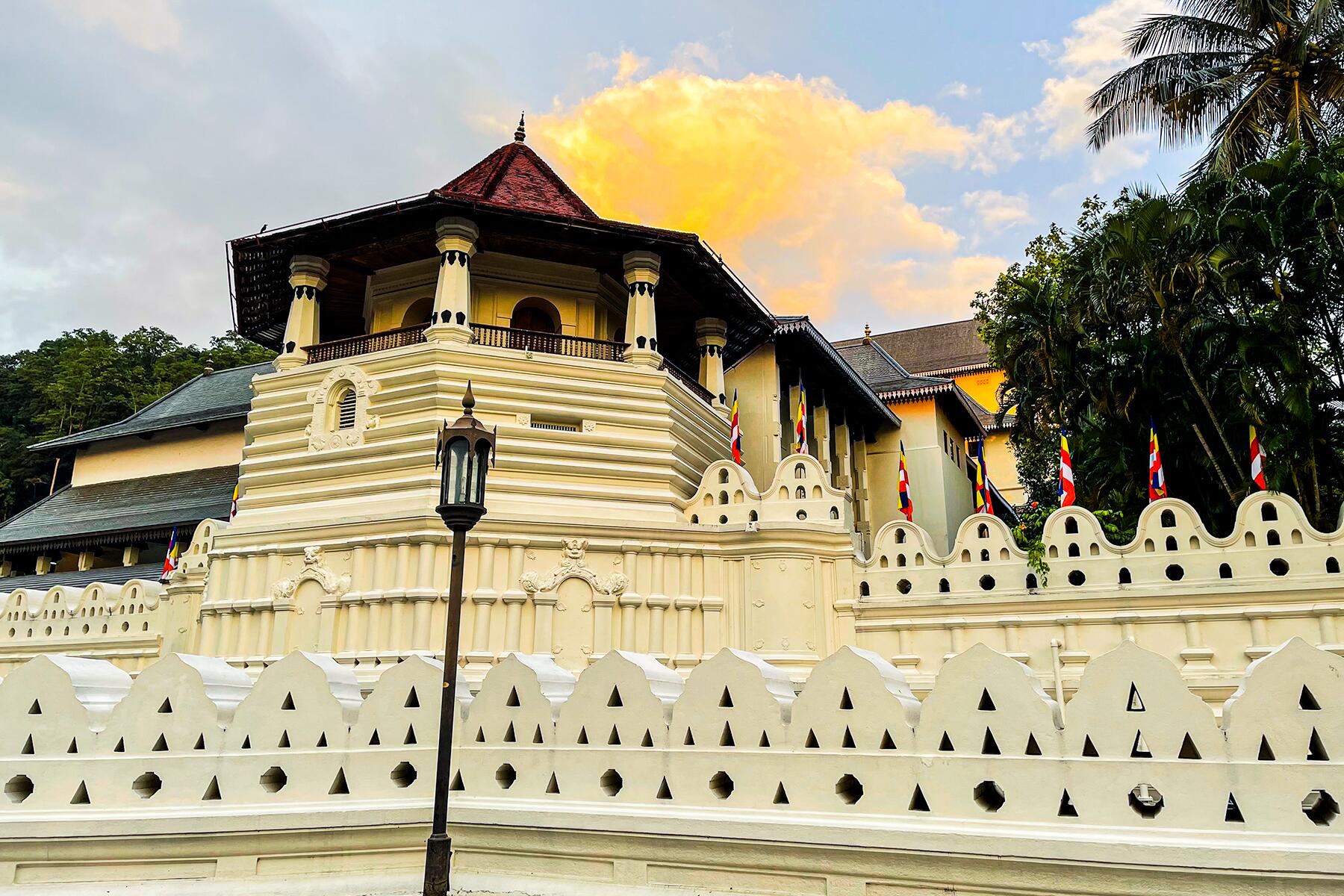
The Complicated History of Sri Lankan Tea
These paths are not new. The serpentine track weaves through the tea country, where back in the day, hoofs once crunched along this gravel. On horse-drawn carts, tea leaves were transported on these roads, and supervisors came to survey the plantations. Legend has it that tea leaves were accidentally concocted into a beverage in China about 5,000 years ago, and the love eventually spread to Europe.
It was the British that brought tea to this island back in 1824. In the 19th century, Sri Lanka was a major exporter of coffee until a fungal disease decimated the crop. The father of Ceylon Tea, James Taylor, bought acres of land in 1867 and successfully experimented with tea production, turning the cash crop from coffee to tea. In 2020, Sri Lanka became the second-largest exporter of tea in the world, bringing home a whopping $1.3 billion annually.
It’s a postcard-perfect moment when you capture a local woman bent down, carefully plucking tea leaves amidst the verdant hills. But these details of its legacy add a level of complexity to the bucolic scenes.
Until 1948, Sri Lanka was under the rule of the British. Workers from another British colony did back-breaking labor on the island to give the world its tea fix. Tamilians from India were brought to the country—many died on the way—and were kept in inhumane conditions on plantations.
The marginalization and exploitation of workers didn’t end when the crown left. It’s a generational wound that continues to infect and scar. The green carpets of rolling tea hills have a spatter of line houses and cramped rooms built for the workers 150 years ago. Many families live in each 10-foot room in conditions that a U.N. expert called degrading in 2021.
Sri Lanka’s New Tea Trail
That February morning, our trio was the only one making the trek. But if all goes according to plan, this tea trail will come to attract trekkers in droves, offering the chance to experience local community tours, restaurants, campsites, and hotels.
We took a watermelon break on a set of rocks with views of the fist-like Knuckles Mountains. We craned our necks to see the mountain that has been featured in films such as Indiana Jones and the Temple of Doom. This trail has taken a decade to be designed and developed, funded by the EU and USAID. Once all 22 stages are fully ready this summer, adventurers will be able to visit and meet local tea workers, stay at line houses, inspect planter’s bungalows, and learn more about the unique Sri Lankan tea-making process.
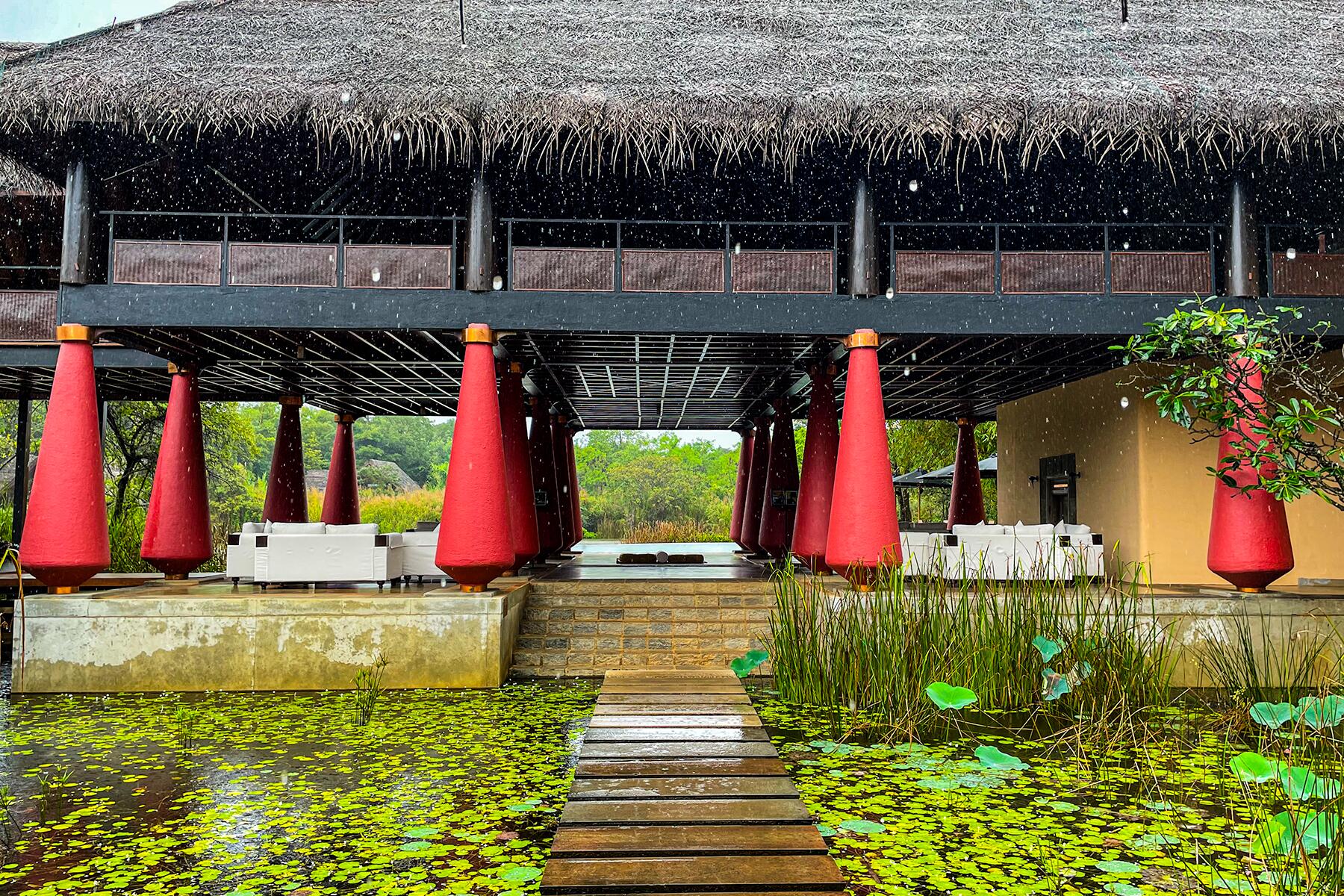
Two Luxury Stays Amongst the Paddies
Jetwing Hotels has 30 properties spread across Sri Lanka, but here are my two recommendations.
The dreamiest hotel on my trip was Jetwing Vil Uyana. Opened in 2006, it is built on a large parcel of abandoned paddy field, and amazingly, the reclaimed land has been transformed into the first man-made wetlands in Sri Lanka. The London Wetlands Center inspired it, and environmental architect Sunela Jayewardene designed it.
Back when it first opened, guests used to arrive by boat, but I was transported to the hotel on an electric buggy. The check-in formalities were lakeside, and as I wandered off, each corner turned more picturesque than the next.
This 28-acre property is home to 36 rooms, a spa, a restaurant, a pool bar, and an abundance of nature. I lived in an overwater villa with a plunge pool outside and a tub inside. There are over 140 species of birds and even a resident crocodile that grins at guests on their way to breakfast. But the most special species is the elusive grey slender Loris, a nocturnal mammal that was discovered on the property more than a decade ago. Now guests can go on the Loris trail at night for $35 per person, and proceeds are used to fund research and conservation of this threatened primate.
There is also a sprawling 2.5-acre farm on-site, blooming with fruits and vegetables that are used in the kitchen. You can go for a lunch experience where you can pluck fresh produce and assist the staff in preparing a typical Sri Lankan lunch with at least four curries, rice, and condiments. In addition, Jetwing Vil Uyana has a water treatment plant, a compost, and a biogas plant, along with four acres of paddy fields to engage the local community.
My other hotel recommendation is the Jetwing Kandy Gallery, located along the River Mahaweli (the longest river in Sri Lanka), away from the bustling Kandy city. It features installations from Sri Lankan artists in the lobby, in rooms, and in common areas. There are just 26 rooms here, and each guest is assigned a butler at check-in, who they can contact using the old-tech mobile with their pre-saved number. I had most of my meals on my balcony overlooking the river and pool, followed by blue tea each evening with a piece of cake.
The hotel opened in January 2020, so it’s lovely and new. There is an hour-long trail around the property that should definitely allure birders, and a local artist visits to demonstrate lacquer art (you can also buy his pieces). The hotel has multiple sustainability initiatives (rainwater harvesting, solar panels, and water treatment plants), but it’s a much smaller property than the brand’s flagship Sigiriya hotel.
